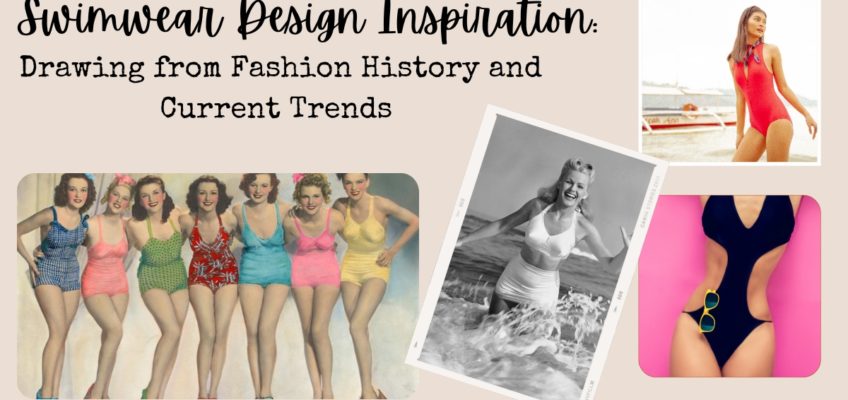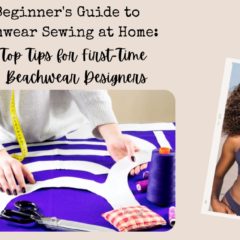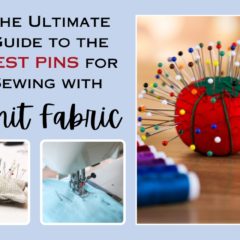Swimwear has come a long way since its early days, transforming from a functional necessity to a fashion statement. As you set out to make your own swimwear, understanding the evolution of beachwear styles and incorporating vintage and modern trends into your designs can help you create a unique and eye-catching piece. In this blog post, we’ll take a journey through swimwear’s fascinating history and discuss how you can draw inspiration from both past and present trends.
The Evolution of Beachwear Styles
- Early 1900s: During this time, modesty was the main concern in swimwear design. Women wore long, heavy bathing dresses made from wool or flannel that covered most of their bodies. Men wore knee-length, one-piece swimsuits made from similar materials.
- 1920s-1930s: As societal norms began to shift, swimwear became more revealing. Women started wearing shorter, form-fitting bathing suits with skirt-like panels for modesty, while men’s swim trunks became more common.
- 1940s: The two-piece swimsuit was introduced in the 1940s, and though it still covered a significant amount of skin, it was a considerable departure from previous designs. High-waisted bottoms and halter tops became popular during this time, as they emphasized the hourglass figure.
- 1950s: The iconic bikini made its debut in the 1950s, revolutionizing swimwear fashion. This daring design exposed the midriff and allowed for more freedom of movement.
- 1960s-1970s: The 1960s and 1970s saw the rise of more experimental swimwear styles, such as monokinis, which were one-piece swimsuits with cutouts, and string bikinis that offered minimal coverage.
- 1980s-present: In recent decades, swimwear has continued to evolve, with a wide variety of styles, prints, and materials available. From athletic one-pieces to high-cut bikinis, the options are endless.
Incorporating Vintage and Modern Trends into Your Own Swimwear Designs
Drawing inspiration from fashion history and current trends can help you create a unique and appealing swimwear design. Here are some tips for incorporating vintage and modern elements into your creations:
- Embrace high-waisted bottoms: High-waisted bikini bottoms, popular in the 1940s and 1950s, have made a comeback in recent years. They offer a flattering silhouette and can be easily combined with modern prints and fabrics for a fresh twist.
- Play with cutouts and one-pieces: One-piece swimsuits with strategically placed cutouts can create a striking and modern look while still paying homage to the monokini styles of the 1960s and 1970s.
- Mix and match prints and colors: Combine retro prints like polka dots or bold stripes with contemporary patterns or colors for a unique and visually engaging design.
- Consider retro-inspired silhouettes: Look to the past for silhouette inspiration, such as the hourglass shapes popular in the 1940s and 1950s or the more daring styles of the 1960s and 1970s. Update these silhouettes with modern fabrics or details for a fresh take on vintage styles.
- Stay informed about current trends: Keep an eye on the latest swimwear trends to find elements that can be incorporated into your designs. Whether it’s a popular print, a new material, or an innovative cut, staying up-to-date with what’s happening in the fashion world can help you create a unique and stylish swimsuit.
- Experiment with sustainable materials: As the fashion industry shifts towards more eco-friendly practices, consider using sustainable materials like Econyl, a regenerated nylon made from plastic waste, or organic cotton treated for water resistance. This not only contributes to a greener future but also sets your swimwear apart from the rest.
- Accessorize thoughtfully: Complete your swimwear design with accessories that complement both vintage and modern styles. Consider adding detachable belts, bows, or even removable sleeves to give your swimsuit a unique touch.
- Collaborate with other designers and artists: To infuse your swimwear design with fresh ideas and unique perspectives, consider collaborating with other designers, artists, or even local artisans. By working together, you can create a truly one-of-a-kind piece that reflects a diverse range of influences.
- Customize your swimwear: Personalization is a popular trend in fashion, so why not apply it to your swimwear design? Offer customizable options like monograms, embroidery, or unique color combinations to make your swimsuit truly unique and tailored to the wearer’s preferences.
- Document your design process: Sharing your design journey, from inspiration to final product, can help connect you with potential customers and other creatives in the fashion community. Document your process through social media or a blog to give insight into your creative approach and showcase your dedication to your craft.
In conclusion, drawing inspiration from both fashion history and current trends can result in a unique and eye-catching swimwear design. By combining elements from different eras and staying informed about contemporary styles, you can create a swimsuit that is both nostalgic and modern.
By exploring the rich history of swimwear and incorporating both vintage and modern influences into your designs, you can create a unique and fashionable piece that stands out on the beach or by the pool. Embrace the endless possibilities of swimwear design and make a splash with your own inspired creations.








Leave a Reply